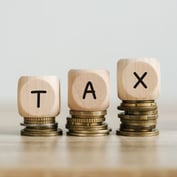(Bloomberg) — The world’s largest economy expanded at a faster pace in the second quarter and managed to eke out a gain at the start of the year, painting a picture on incremental progress consistent with the Federal Reserve’s view.
Gross domestic product rose at a 2.3 percent annualized rate, and a revised 0.6 percent advance in the first quarter wiped out a previously reported contraction, Commerce Department data showed Thursday in Washington. The median forecast of 80 economists surveyed by Bloomberg called for a 2.5 percent gain. Consumer spending grew more than projected, and price increases accelerated.
The economy has moved beyond some of the early 2015 constraints including weather and port delays, while cooling global markets, a strong dollar and insufficient wage gains may continue to limit growth. Fed officials, considering when to begin raising rates this year, concluded on Wednesday that the U.S. is making progress.
“We had better growth and better inflation in the first half,” said Eric Green, head of U.S. economic research at TD Securities in New York. “This should make the Fed feel more comfortable about raising rates this year.”
Economists’ estimates for GDP, or the value of all goods and services produced, ranged from 1.2 percent to 3.8 percent. The growth estimate is the first of three for the quarter, with the other releases scheduled for August and September when more information becomes available.
Annual revisions
The Commerce Department also issued its annual revisions, updating the data back through 2012. The first-quarter’s reading was revised up from a previously reported 0.2 percent drop.
The economic expansion over the past three years was weaker than initially projected, with the biggest revision coming in 2013. From the end of 2011 to the end of 2014, the economy expanded at a 2.1 percent annualized rate, compared to the 2.4 percent pace reported before. GDP grew 1.5 percent in 2013, the weakest since the throes of recession in 2009, compared with a previously reported 2.2 percent gain.
A separate report from the Labor Department Thursday showed fewer Americans than forecast filed applications for unemployment benefits last week. Jobless claims rose by 12,000 to 267,000 in the period ended July 25.
Consumer spending
An improving job market is among reasons American households are underpinning economic growth. Consumer spending climbed at a 2.9 percent annualized rate following a 1.8 percent advance at the start of the year, Thursday’s Commerce Department report showed. The Bloomberg survey median forecast was 2.7 percent. Purchases added 2 percentage points to growth.
Nonetheless, increasing employment has yet to significantly boost household earnings. After-tax income adjusted for inflation rose at a 1.5 percent annual rate in the first quarter, the smallest gain since the end of 2013, the Commerce Department’s report showed. That meant consumers had to dip into their bank accounts to boost spending, sending the saving rate down to 4.8 percent from 5.2 percent in the first quarter.
Business spending remained a sore spot, with investment excluding housing falling at a 0.6 percent rate, the worst performance since the third quarter of 2012.
Government outlays were another source of weakness, rising just 0.8 percent after dropping 0.1 percent in the first quarter. A 2 percent gain among state local agencies was almost wiped out by a 1.1 percent drop at the federal level.








 July 30, 2015 at 07:03 AM
July 30, 2015 at 07:03 AM










